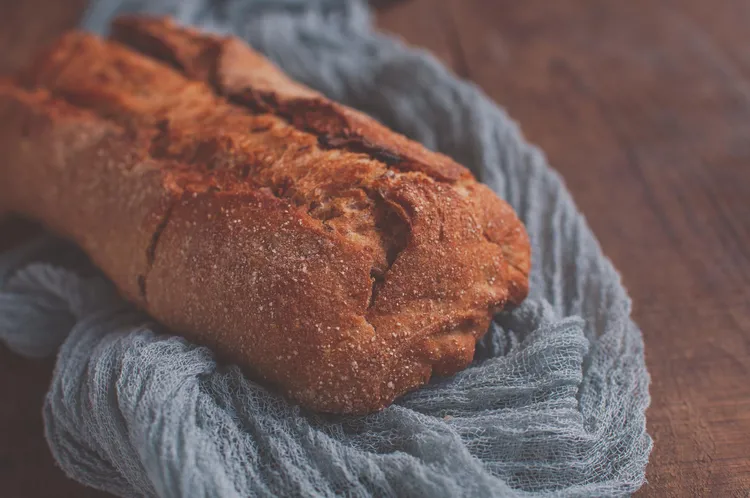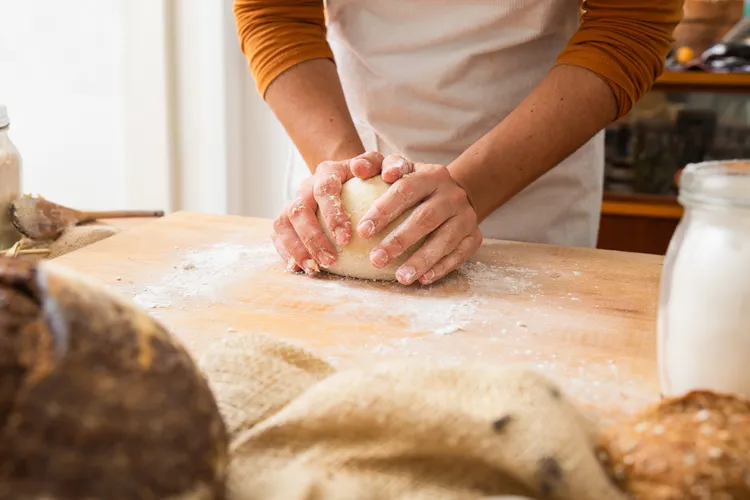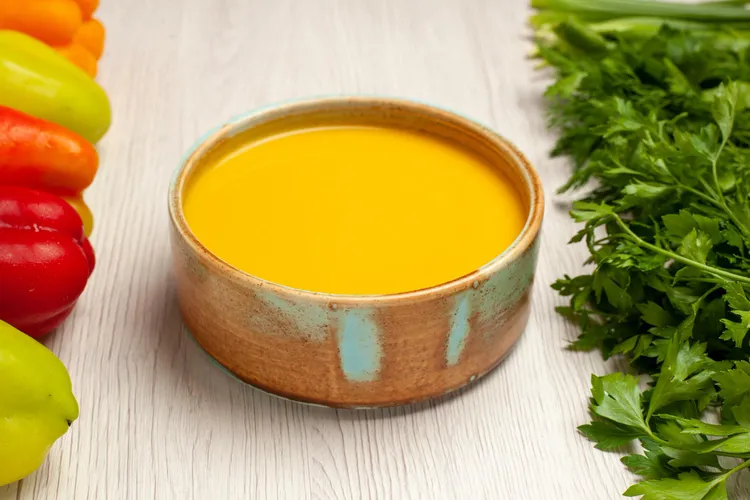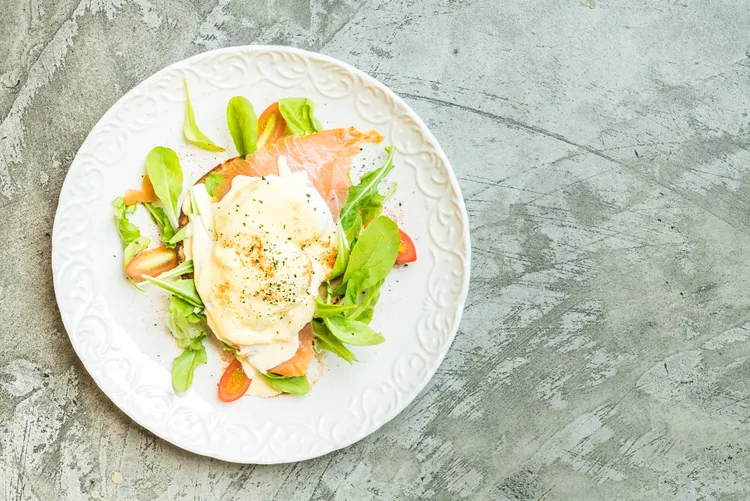Why Letting Food Rest Matters (Not Just Meat)
Letting your food rest is one of those “little things” that makes a big difference - like salting properly or preheating the pan. Most people think resting is just for steak, but almost everything benefits from a pause before you slice, scoop, or dig in.

What Does “Letting Food Rest” Actually Mean?
Letting food rest simply means: You stop cooking it and let it sit undisturbed for a short period before cutting, serving, or eating.
This applies to:
Meat and fish
Roasted vegetables
Casseroles and lasagna
Breads and cakes
Rice, grains, and beans
Even soups, stews, and sauces
Resting is not wasted time. It’s when:
Juices redistribute
Starches set
Steam escapes gently
Flavors settle and meld
Think of it as your food breathing out: “Okay… I’m ready now.”
The Science of Resting Food
Why does resting matter so much? A few key processes are happening:
1. Redistribution of Juices
When food is exposed to heat (especially dry heat), the water inside is pushed toward the center.
If you cut into a steak or chicken breast immediately:
The hot juices spill right out onto the plate.
The meat tastes drier, even though it technically had plenty of moisture.
If you let it rest:
The internal temperature evens out.
Juices move back through the muscle fibers.
You get juicier bites from edge to center.
2. Carryover Cooking
Food doesn’t stop cooking the moment you turn off the heat.
Residual heat continues to:
Cook the inside a few extra degrees
Finish thick cuts gently
Set custards, casseroles, and baked goods
This is called carryover cooking, and it’s why:
You often remove meat from the heat slightly before your target temperature.
Lasagna firms up after coming out of the oven.
3. Starch Setting and Gelatinization
Foods like:
Bread, cake, brownies
Rice, potatoes, pasta, beans
…are full of starches that absorb water during cooking. When you let them rest, those starch molecules cool slightly and set, which:
Improves texture
Prevents soggy slices
Makes dishes easier to cut and serve
4. Steam Equalization
Hot food releases steam. If you slice a lasagna or loaf of bread too soon:
Steam escapes violently
Texture becomes gummy or dry
Resting allows the steam to release slowly, so the internal structure stays intact.
5. Flavor Melding
Many dishes - especially soups, stews, curries, and casseroles - taste even better after resting because:
Aromatic molecules have time to mingle
Sharp notes mellow
The flavor feels more “integrated” and round
From a flavor perspective, resting is like giving your dish time to introduce all its ingredients to each other.
Yes, Resting Meat Matters (But Let’s Do It Right)
Most people have heard, “Let your meat rest before slicing.” Let’s unpack that properly.
Why Resting Meat Matters
Juiciness: As explained, juices redistribute instead of running out.
Tenderness: Fibers relax slightly as they cool.
Flavor: Every bite tastes more consistent from edge to center.
How Long Should Meat Rest?
You don’t need a stopwatch, but here’s a helpful guide:
Steak (2-4 cm thick): 5-10 minutes
Large steaks / thick pork chops: 10-15 minutes
Whole chicken: 15-20 minutes
Roast chicken or turkey: 20-30 minutes
Large roasts (beef, lamb, pork shoulder): 20-45 minutes
A simple rule: Rest for about 1 minute per 100 g (3-4 oz) for small cuts, and up to 30-45 minutes for big roasts.
How to Rest Meat Properly
Transfer to a warm plate or cutting board.
Loosely tent with foil (don’t wrap tightly).
Don’t slice until the rest time is up.
For crispy skin (like roast chicken), tent just the meat and avoid trapping too much steam on the skin side.
It’s Not Just Meat: Other Foods That Need Resting
Here’s where it gets fun. Resting isn’t only for steaks and roasts. A lot of everyday foods taste way better with a short pause.
1. Bread and Baked Goods
Ever cut into fresh bread right from the oven and thought, “Why is this gummy?” That’s a resting issue.
When bread, cakes, or brownies come out of the oven:
The crumb is still setting.
Steam is escaping.
Starches are stabilizing.
If you slice too soon:
Texture becomes sticky or doughy.
You compress the crumb.
Moisture escapes unevenly.
Resting Guidelines:
Yeasted bread loaves: At least 30-60 minutes before slicing.
Cakes: 10-20 minutes in the pan, then cool further on a rack.
Brownies/bars: Let cool completely for clean slices (or at least 30 minutes if you’re impatient!).
From a nutrition perspective, properly cooled bread:
Has better portion control (slices don’t crumble).
Is easier to digest for some people.
2. Soups, Stews, and Curries
These are famous for tasting better the next day - and resting is a big reason why.
As these dishes sit:
Flavors meld together.
Seasonings distribute more evenly.
Heat-sensitive herbs and aromatics soften and integrate.
At minimum, let soups and stews:
Rest 10-15 minutes before serving.
If you can, make them a few hours ahead-or even the day before.
Nutrition bonus:
You can skim excess fat more easily from cooled soups and stews.
Flavors are deeper, so you often need less salt to feel satisfied.
3. Lasagna, Casseroles & Baked Pasta
If you’ve ever tried to scoop lasagna straight from the oven and ended up with a cheesy landslide, you know why resting matters.
When these dishes rest:
Sauces thicken.
Cheese firms slightly.
Layers stay intact.
Resting Guidelines:
Lasagna: 15-30 minutes before cutting.
Baked pasta dishes: 10-20 minutes.
Casseroles: 10-15 minutes.
Texture improves, and portions look beautiful on the plate.
4. Rice, Grains, and Beans
Resting starchy foods after cooking is a quiet game-changer.
After you turn off the heat:
Starches finish absorbing water.
Texture evens out (no more wet on the bottom, dry on top).
Resting Guidelines:
Rice: Let sit, covered, 5-10 minutes after cooking, then fluff.
Quinoa, couscous, bulgur: Rest 5-10 minutes for better texture.
Beans: Let sit in their cooking liquid 10-20 minutes to soften and hydrate.
Nutrition benefit: Some starches begin to cool and form resistant starch, which can support gut health and better blood sugar control (especially when cooled and then reheated gently).
5. Roasted Vegetables & Potatoes
Fresh from the oven, roasted vegetables are:
Extremely hot inside
A bit fragile
Still steaming
If you serve too quickly:
Texture can feel mushier
Seasoning might not be fully absorbed
Let them rest 5-10 minutes:
Edges stay crisp, but centers firm slightly.
Flavors round out.
This is especially lovely for:
Roasted potatoes or sweet potatoes
Brussels sprouts
Carrots, parsnips, beets
Mixed roasted veggie trays
6. Eggs, Omelets, and Frittatas
Eggs continue to cook with residual heat. If you serve them immediately when they look “done” in the pan, they often end up overcooked by the time you sit down to eat.
Try this:
Remove scrambled eggs or omelets from heat while they’re still slightly soft and glossy.
Let rest 1-2 minutes in the pan (off heat) or on the plate.
Frittatas and egg bakes:
Rest 5-10 minutes so they set and slice cleanly.
7. Pancakes, Waffles & French Toast
Even these breakfast treats benefit from a tiny rest:
Let pancakes sit 1-2 minutes after cooking so steam escapes and texture stabilizes.
Waffles stay crisp if they rest briefly on a cooling rack instead of stacking right away.
Resting Food and Nutrition: The Hidden Benefits
From a nutritionist’s perspective, resting food doesn’t just improve texture and flavor - it can support better digestion, satisfaction, and balance.
1. Better Portion Control
When lasagna cuts cleanly or bread slices evenly:
You portion more mindfully.
You’re less tempted to “fix” messy servings with extra food.
2. Improved Digestion
Properly rested and cooled starches (like rice, potatoes, and beans) can form resistant starch, which may support gut health.
Less frantic “eating while it’s burning hot” means more mindful, slower eating.
3. More Flavor, Less Salt & Sauce
When food has had time to:
Redistribute liquids
Mellow harsh notes
Integrate flavors
…it often tastes more satisfying without needing extra:
Salt
Butter
Creamy dressings
Resting = built-in flavor boost.
How Long Should You Let Food Rest? (Quick Guide)
Here’s a handy cheat sheet:
Steaks / chops: 5-10 minutes
Whole roasted chicken: 15-20 minutes
Large roasts: 20-45 minutes
Lasagna / baked pasta: 15-30 minutes
Casseroles: 10-15 minutes
Bread loaves: 30-60 minutes
Cakes: 10-20 minutes in pan, then cool more
Rice / grains: 5-10 minutes, covered
Soups / stews: 10-15 minutes (or longer) before serving
Roasted veggies: 5-10 minutes
Egg bakes / frittatas: 5-10 minutes
Don’t panic if you’re not exact. The main point is: a little rest is better than none.
How to Rest Food Without Ruining It
A few simple tips:
1. Don’t Cover Too Tightly
Tenting with foil is great for meat - but leave gaps for steam to escape.
Too tight = trapped steam = soggy crust or skin.
2. Use Racks When Needed
Rest bread and roasted foods on a cooling rack so the bottom doesn’t get soggy.
3. Mind Food Safety
Don’t leave foods at room temperature for hours.
In general, aim to keep resting within safe time frames (usually under 2 hours; much less for hot, perishable foods).
4. Plan Resting Into Your Cooking Schedule
While meat rests, roast your vegetables.
While lasagna rests, toss a salad.
While bread cools, brew coffee or tea.
Resting time can become your built-in kitchen rhythm.
Common Myths About Resting Food
Myth 1: “Resting is only for fancy restaurant chefs.”
Truth: Resting is especially important for home cooks, where ovens and pans may be uneven and timing isn’t always perfect.
Myth 2: “Resting meat makes it cold.”
If you tent properly and don’t rest excessively long, the meat will still be warm and often more enjoyable because you’re not burning your mouth.
Myth 3: “If I’m hungry, I can skip resting.”
You can, of course - but you’ll lose juiciness, structure, and some of that “wow” factor. Even 3-5 minutes helps.
Letting food rest is one of the kindest things you can do - for your ingredients and for yourself.
It’s a tiny act of patience that rewards you with:
Juicier meats
Better-textured bread and grains
Prettier slices of lasagna and cake
Deeper, more rounded flavors
More satisfying meals that support your health and happiness
Next time you’re tempted to cut into that roast or scoop the casserole right away, take a breath, step back, and give your food a moment.
You did the work. Let the food finish its work too.









